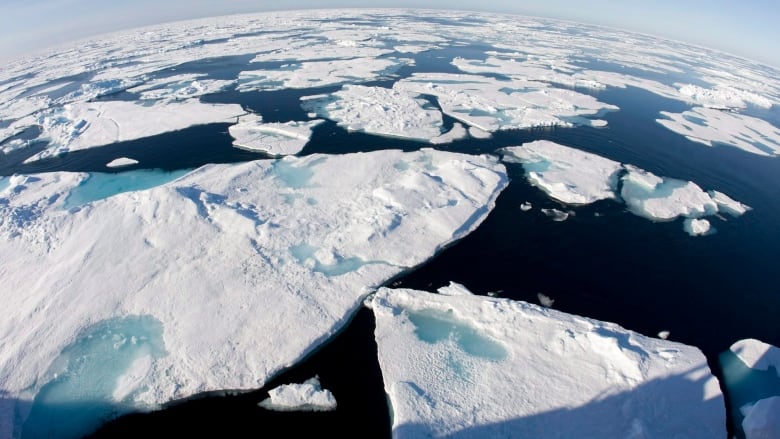Warmer Arctic Ocean temperatures delay sea ice formation
'We are headed to a world in which we are going to have no sea ice in summer,' says scientist

A spike in Arctic temperatures has slowed sea ice from forming on theArctic coast, making hunting more difficult, and dangerous for Inuit.
According to one Arctic climate specialist, thinning multi-year sea ice the kind that caps part of the Arctic Ocean all year long could disappear entirely.
Moses Koonoo in Arctic Bay, Nunavut, was out hunting for seal and fishing for char this week. He says the sea ice was so thin he had to stay near the coast with his snowmobile, being careful not to break through.
"The sea ice condition was not too great because in some places it was wet."
He says the ice was about 8cm thick when this time of year it's normally closer to 30 cm.
"The air seems to be cold, but the sea water must be warmer temperature," he said.
"It's causing it to delay the forming of the ice."
- China could take leadership role in Paris climate change deal if Trump pulls U.S. out
- Arctic sea ice at record winter low: monitoring agency

20 C warmer than normal
And that's on par with what scientists are reporting. Jennifer Francis, a marine and coastal sciences research professor at Rutgers University in New Jersey, says a lack of sea ice near Scandinavia and Western Russia means energy from the sun is warming the Arctic Ocean.
"The temperatures there of the atmosphere are on the order of any given day, like 20 C warmer than they should be for this time of year," she said.
"The ocean temperatures there are also warmer than they should be. I'm really, really worried and I think everyone should be."
Mark Serreze, director of the Snow and Ice Data Centre at University of Colorado, says atmospheric circulation or shifting winds have brought warm air north.
"There was a period last week when the sea ice wasn't growing at all," he said.
"There is a lot of energy still in the ocean. Until the ocean cools off, you really can't form much sea ice."
And these warmer waters are also thinning multi-year ice.
"We are headed to a world in which we are going to have no sea ice in summer at some point. Maybe in 20 or 30 years from now it will be but a seasonable feature."
Cold in Chicago, 'absurdly warm over Alaska'
Serreze says the jet stream, and the weather patterns it influences, can be highly variable.
"We'll find that one area is much much warmer than normal while other areas might be very colder than normal. It's very, very warm over the Arctic Ocean right now, but over parts of Siberia it's actually rather cold right now.
"The questions are out there what's happening in the Arctic?Could that favour certain patterns of the jet stream so you get stuck weather patterns, so you get something like Chicago is in a deep freeze while at the same time it is absurdly warm over Alaska, so you have to shift the location of where you start the [dog sled race]Iditarod."
However, Serreze says the recent spike in Arctic temperatures has started to decline.
As for the impact on Koonoo's hunting trip, he spotted many seals but he couldn't reach most of them as the ice was too thin.
with files from Mitch Wiles and Karen Pauls












_(720p).jpg)


 OFFICIAL HD MUSIC VIDEO.jpg)
.jpg)



























































































